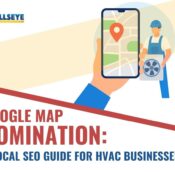
Win More Customers – Web Design Strategies for Maximum Impact in Home Automation!
Explore higher Home Automation Site Conversion with smart web design strategies. Learn how to craft user-friendly layouts, compelling CTAs, and SEO-optimized pages that drive leads and sales for your home tech business. Win more customers effortlessly!
Call Now For The Expert Digital Marketing Solutions: 561-277-0148
Why Home Automation Site Conversion Is a Game-Changer for Your Business
It is not enough to have a beautiful website in the fast-paced digital world of today. Success for companies in the smart home market depends on how well your website turns visitors into leads and paying clients. At this point, Home Automation Site Conversion emerges as your marketing strategy’s key performance indicator.
Site Conversion in the Smart Home Industry
Site conversion refers to the process of turning visitors into customers through your website. This might be filling out a contact form, scheduling a consultation, or making a purchase. The higher your conversion rate, the more successful your site is at generating revenue.
Why Traditional Design Tactics Fall Short
Generic web design strategies often overlook the unique buying behaviors of home automation customers. These are tech-savvy, detail-oriented consumers looking for convenience, innovation, and quality. Traditional websites fail to speak their language, leading to lost opportunities.
Real Data Behind Conversion Rates in Home Tech
Research shows that websites optimized for conversion can boost leads by up to 300%. With smart home solutions being a high-consideration purchase, small UX improvements can yield huge gains.
Crafting the Best CTA for Home Tech Sites That Actually Convert
Your Call-To-Action (CTA) is the heartbeat of your conversion strategy. It tells visitors exactly what to do next—and it better be convincing.
Psychology of a High-Converting CTA
A great CTA taps into a user’s emotions. Use action verbs like “Schedule Your Smart Home Demo” or “Claim Your Free Automation Audit.” Create urgency with phrases like “Limited Time Offer” or “Only 5 Spots Left This Week.”
CTA Placement Strategies for Smart Home Websites
- Top right corner for visibility
- End of every scrollable section
- Exit-intent popups to capture bouncing users
Examples of CTAs That Drive More Leads
- “Get My Smart Home Plan”
- “Talk to an Automation Specialist”
- “Customize My Home Tech Setup”
These align with the specific needs and curiosity of smart home shoppers.
How to Improve Home Tech UX for Seamless Interaction
Improve Home Tech UX by eliminating friction in navigation and interaction.
Intuitive Navigation for All Tech Users
Even tech enthusiasts appreciate simplicity. Use dropdown menus, breadcrumb trails, and clearly labeled sections to guide users.
Responsive Design for Every Smart Device
Your users will access your site from phones, tablets, and voice assistants. Ensure your design adapts beautifully to each screen.
Accessibility Tips to Widen Your Audience
Use high contrast colors, readable fonts, alt-text for images, and keyboard navigation for users with disabilities.
Building SEO Optimized Smart Home Sites from the Ground Up
SEO is the fuel that brings traffic to your conversion engine. SEO Optimized Smart Home Sites attract the right kind of traffic: people looking for smart home solutions.
On-Page SEO for Home Automation
- Use keywords in headers (like “Home Automation Site Conversion”)
- Optimize title tags and meta descriptions
- Use schema markup for products and services
Technical SEO Essentials for Web Developers
- Fast loading speed (under 2 seconds)
- Secure HTTPS protocol
- Clean URL structure
Local SEO Tactics to Dominate Your Market
- Add your business to Google My Business
- Use local keywords like “Smart Home Installer in [City]”
- Gather local reviews
Transforming Your Website into a Lead-Generating Home Tech Hub
To build Lead-Generating Home Tech Websites, you need to treat your site like a salesperson.
Conversion-Driven Landing Page Strategies
Each service or product should have its own landing page with targeted messaging, testimonials, and a strong CTA.
Building Trust Through Design and Testimonials
Include:
- Real customer reviews
- Video testimonials
- Before-and-after home automation examples
Integration of CRM and Lead Capture Tools
Connect forms to your CRM system. Use tools like HubSpot or Zoho to automatically follow up with leads.
Create User-Friendly Smart Home Pages That Keep Visitors Engaged
A User-Friendly Smart Home Page doesn’t just look nice—it guides users smoothly through the buying process.
Visual Hierarchy That Guides the Eye
Use size, color, and placement to prioritize important information like CTAs and value propositions.
Mobile Optimization Must-Haves
- Thumb-friendly buttons
- No intrusive popups
- Fast loading time
Fast Load Speeds and Clean Layouts
Studies show 53% of users abandon a site that takes over 3 seconds to load. Compress images and use a CDN to speed things up.
How to Optimize Your Home Tech Sales Funnel Online
Your Optimize Home Tech Sales Funnel strategy should align your website content with your customer journey.
Awareness, Consideration, Decision: Funnel Stages Explained
- Awareness: Blog posts, videos about benefits of home automation
- Consideration: Product comparison pages, customer testimonials
- Decision: Free demos, pricing plans, strong CTAs
Tools for Tracking and Optimizing Funnel Performance
- Google Analytics for user behavior
- Hotjar for heatmaps
- A/B testing tools like Optimizely
A/B Testing to Refine Every Step
Test everything from CTA text to form length. Even minor tweaks can improve Home Automation Site Conversion by 10% or more.
The Role of Smart Home Web Aesthetics in Customer Perception
Smart Home Web Aesthetics influence how visitors feel about your brand.
Color Psychology in Home Tech Branding
- Blue = Trust
- Green = Innovation
- White = Clean tech feel
Use these colors to reinforce your brand personality.
Minimalism vs. Feature-Rich Design
Minimalism keeps things clean, but doesn’t sacrifice necessary features. Strike a balance based on your audience.
Consistent Branding Across the Site
Fonts, colors, and button styles should be uniform. This helps build trust and familiarity.
Web Navigation for Home Automation Success
Web Navigation for Home Automation should be both functional and frictionless.
Mega Menus vs. Minimal Menus – What Works Best?
Mega menus work well for large inventories. Minimal menus are better for simple product offerings. Choose based on your product depth.
Internal Linking for Both SEO and UX
Link related blog posts and product pages to keep users exploring and reduce bounce rates.
Sticky Headers and Smart Breadcrumbs
These help users navigate without getting lost, especially on mobile devices.
Engaging Home Tech Site Design That Encourages Action
Engaging Home Tech Site Design keeps visitors interacting with your content.
Interactive Demos and Virtual Showrooms
Let users control smart devices virtually. Simulate lighting changes or security features to spark interest.
Video Tours and Product Explainers
Video increases engagement and helps users understand complex technology.
Use of Animation and Microinteractions
Subtle hover effects or loading animations can delight users and improve perception of innovation.
Common Mistakes That Hurt Your Home Automation Site Conversion
Avoid these pitfalls that kill conversion:
Ignoring Mobile Users
Over 60% of smart home buyers browse on mobile. Your site must be fully responsive.
Overloading with Features
Don’t confuse users. Focus on benefits, not just features.
Poor Visual Design and Cluttered Pages
Clutter overwhelms visitors. Use whitespace and clean layouts to reduce friction.
Proofing Your Website for Evolving Smart Home Trends
Stay ahead by adapting to these emerging trends:
Voice Search Optimization
Smart speakers are everywhere. Use natural language keywords and FAQs.
AI-Driven Personalization
Show products based on visitor behavior. Personalized experiences convert better.
Integrating IoT into Web Interfaces
Give users real-time data on smart home performance or integrate with third-party apps.
Conclusion: Turn Clicks into Customers with Strategic Web Design
Your website is your strongest sales tool—if it’s designed right. By focusing on Home Automation Site Conversion and using strategic elements like intuitive UX, engaging CTAs, optimized sales funnels, and smart aesthetics, you can transform your online presence into a lead-generating machine. Combine SEO best practices with UX excellence and your smart home business will not only attract visitors but convert them into loyal customers.
5 FAQs for Quick Insights
What is the most important factor in boosting Home Automation Site Conversion?
A strong, visible CTA combined with intuitive UX and fast load speed is key.
How can I make my smart home website more engaging?
Use interactive demos, video explainers, and microinteractions to draw users in.
What’s the best CTA for Home Tech Sites?
CTAs that promise a result like “Get My Smart Home Plan” or “Book a Free Demo” work best.
How do I improve SEO for my smart home site?
Incorporate keywords, optimize loading speed, and build local backlinks.
Why is UX critical for home automation websites?
Good UX guides users, builds trust, and eliminates friction—all of which boost conversion.




